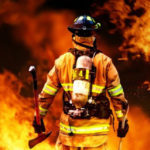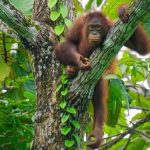 Music
Music  Music
Music  History
History 10 Less Than Jolly Events That Occurred on December 25
 Weird Stuff
Weird Stuff 10 Funny Ways That Researchers Overthink Christmas
 Politics
Politics 10 Political Scandals That Sent Crowds Into the Streets
 Weird Stuff
Weird Stuff Ten Bizarre Facts About The Doge Meme
 Our World
Our World 10 Ways Your Christmas Tree Is More Lit Than You Think
 Movies and TV
Movies and TV The 10 Coolest Stars to Set Sail on The Love Boat
 History
History 10 Things You Didn’t Know About the American National Anthem
 Technology
Technology Top 10 Everyday Tech Buzzwords That Hide a Darker Past
 Humans
Humans 10 Everyday Human Behaviors That Are Actually Survival Instincts
 Music
Music 10 Surprising Origin Stories of Your Favorite Holiday Songs
 History
History 10 Less Than Jolly Events That Occurred on December 25
 Weird Stuff
Weird Stuff 10 Funny Ways That Researchers Overthink Christmas
Who's Behind Listverse?

Jamie Frater
Head Editor
Jamie founded Listverse due to an insatiable desire to share fascinating, obscure, and bizarre facts. He has been a guest speaker on numerous national radio and television stations and is a five time published author.
More About Us Politics
Politics 10 Political Scandals That Sent Crowds Into the Streets
 Weird Stuff
Weird Stuff Ten Bizarre Facts About The Doge Meme
 Our World
Our World 10 Ways Your Christmas Tree Is More Lit Than You Think
 Movies and TV
Movies and TV The 10 Coolest Stars to Set Sail on The Love Boat
 History
History 10 Things You Didn’t Know About the American National Anthem
 Technology
Technology Top 10 Everyday Tech Buzzwords That Hide a Darker Past
 Humans
Humans 10 Everyday Human Behaviors That Are Actually Survival Instincts
10 Deadly School Shootings That Predated Columbine
The deeply troubling issue of mass school shootings, particularly prevalent in the U.S., has become an all too familiar part of contemporary society. This form of violence, often incorrectly assumed to have started with the 1999 Columbine High School incident, actually has a longer history.
While Columbine shocked the world and is often seen as the start of this tragic trend, historical records reveal similar incidents occurred prior. These earlier, less well-known US school shootings emphasize the need for a comprehensive understanding and evaluation of this problem in its historical context and patterns for effective prevention strategies.
Related: 10 Active Shooter Drills Gone Horribly Wrong
10 Pearl High School Shooting (1997)
In 1997, Luke Woodham, a 17-year-old, killed two classmates, including his former girlfriend Christina Menefee, and wounded seven others. Prior to the school attack, Woodham murdered his mother, a crime for which he was separately convicted.
During his trial, Woodham admitted to the shootings but claimed he couldn’t recall killing his mother, asserting he was legally insane at the time. His defense team suggested that he was swayed by Grant Boyette, an alleged member of a cult-like group, who had encouraged him to take revenge on his ex-girlfriend and kill his mother.
In court, Woodham expressed regret for his actions but insisted that Boyette had coerced him into the murders. He admitted to the intense anger and sorrow he felt after Menefee ended their relationship and claimed it had overwhelmed him. However, the prosecution underscored that his personal issues were not unique, and they presented a videotaped confession as evidence, recorded less than an hour after the shootings.
In the end, the jury dismissed Woodham’s insanity defense and convicted him of the murders and assaults. He received two consecutive life sentences for the murders and seven 20-year sentences for the assaults. Woodham remains incarcerated in Mississippi.[1]
9 Frontier Middle School Shooting (1996)
On February 2, 1996, a tragic shooting occurred at Frontier Junior High School in Moses Lake, Washington. Barry Loukaitis, a 14-year-old eighth-grader, entered his Algebra classroom armed with a rifle and two handguns. He killed two students and the teacher and injured another student before a gym teacher heroically subdued him.
Loukaitis was tried as an adult, convicted of murder and kidnapping, and sentenced to two life terms plus 205 years in prison. This case stood out due to the portrayal of Loukaitis’s troubled home life and mental health issues. His parents were undergoing a bitter divorce, and he had been subjected to teasing and bullying at school. His defense team claimed that Loukaitis was in a “psychotic delusion” during the shooting, but the jury dismissed this argument and found him guilty.
The tragedy deeply impacted the town of Moses Lake. In its aftermath, residents displayed messages of solidarity and prayer as they sought to heal. Following a U.S. Supreme Court ruling that life sentences without parole for juveniles were unconstitutional, Loukaitis was resentenced to 189 years.[2]
8 Richland High School Shooting (1995)
In the mid-1990s, several years before the infamous school shooting at Columbine, another tragic event unfolded in November 1995. Jamie Rouse, a 17-year-old student, carried out a devastating shooting at Richland High School in the small town of Lynnville, Tennessee. Armed with a .22-caliber Remington semi-automatic rifle, a weapon known for its lethal precision, Rouse targeted two of his teachers, tragically taking the life of one and causing severe injury to the other.
In the midst of this chaotic scene, another student was inadvertently killed by Rouse as he attempted to aim at the school’s football coach. Following the shocking incident, Rouse was successfully subdued and disarmed by the combined efforts of a brave student and a teacher, preventing further harm.
To those who knew him, Rouse was perceived as a typical teenager. He was known to dress in black clothing and listen to loud music, not uncommon for teenagers of his age. However, beneath the surface, Rouse was quietly wrestling with personal struggles. Throughout his high school years, he turned to alcohol and drugs as a means of escape. He also found solace in death metal music and violent films, claiming that these elements filled a void in his life and made him feel empowered.
When the time came for his trial, Rouse was ultimately convicted on several charges, including first-degree murder, second-degree murder, and attempted first-degree murder. These convictions led to a life sentence without the possibility of parole. Like Loukaitis, Rouse’s sentence was also affected by the Supreme Court decision. Despite this, he remains incarcerated, continuing to serve his life sentence for the crimes he committed.[3]
7 Bard College at Simon’s Rock Shooting (1992)
In a tragic event at Bard College at Simon’s Rock in Great Barrington, Massachusetts, 18-year-old student Wayne Lo initiated a shooting spree that resulted in two fatalities and four injuries. Lo had purchased the semi-automatic rifle used in the attack from a local gun shop earlier that day.
The incident unfolded around 9:30 p.m. on December 15, 1992, beginning at a campus security booth where a guard was injured. Then, a Spanish professor was fatally shot in his car. The assailant moved on to the school library, killing a student and injuring another. The rampage concluded with two more students wounded at a dormitory before Lo contacted the police from the student union building.
Lo, a gifted violinist from Billings, Montana, was a sophomore at this 300-student school renowned for its advanced program for high-performing high school students. He was charged with two counts of murder, four counts of assault with intent to murder, and four counts of assault and battery with a weapon. Despite investigations, the authorities could not establish a clear motive for the shooting, and it was unclear whether the victims were randomly selected or specifically targeted.
Peers noted that Lo had become increasingly isolated and irate in the weeks preceding the incident. However, Lo’s mother, Lin-Lin, expressed surprise, stating she had visited her son days prior to the event, and he seemed content. He had even made plans to return home for the winter break. The violent episode shocked the community of Simon’s Rock College and raised questions about the pressures faced by its students.
Lo remains incarcerated in Massachusetts.[4]
6 Lindhurst High School Shooting (1992)
On May 1, 1992, Eric Houston, a former student and 20-year-old dropout, stormed into Lindhurst High School in Olivehurst, California. Armed with a shotgun and a rifle, he initiated an eight-hour siege that resulted in four deaths and 11 injuries. Houston reportedly held a grudge against his former history teacher, blaming him for his academic struggles.
After fatally shooting the teacher and three students, Houston moved to another part of the building, holding about 80 people hostage. The attack concluded that evening when Houston surrendered to law enforcement. The authorities confiscated his weapons and took him into custody. Following the incident, police searched the school, revealing the tragic aftermath of Houston’s rampage. The injured were transported to a nearby hospital for treatment.
The incident had a profound effect on the community and the victims’ families. Houston, an unemployed assembly line worker, had struggled in his time at Lindhurst High School and appeared to have planned the attack as an act of revenge.
On September 21, 1993, Houston was found guilty of all charges against him and was sentenced to death. In 2012, the California Supreme Court upheld his death penalty. As of 2024, Houston is still on death row.[5]
5 University of Iowa Shooting (1991)
On November 1, 1991, the University of Iowa campus suffered a tragic shooting that resulted in five fatalities and one severe injury. A witness, who initially mistook the gunshots for construction noise, understood the seriousness of the situation when they learned that the Physics Department’s chairman had been shot dead.
The perpetrator was Gang Lu, a recent Ph.D. graduate who was disgruntled about not receiving an award he deemed essential for his career. This would have also helped him to avoid returning to post-Tiananmen Square China.
As news of the active shooter spread like wildfire across the campus, a palpable sense of panic and shock gripped the students and faculty members. They were forced to confront the grim reality that their place of learning had been transformed into a site of violence and terror. After mercilessly shooting the chairman, Gang Lu continued his murderous rampage, killing and injuring others in his path.
His reign of terror came to an end only when he ultimately chose to take his own life. This horrifying event, which unfolded over a span of several grueling hours, marked one of the earlier instances of school shootings in the U.S. It served as a grim foreshadowing of a pattern of violence that, sadly, would become an all-too-familiar occurrence in the years to come.[6]
4 Stockton Schoolyard Shooting (1989)
On January 17, 1989, a gunman named Patrick Purdy opened fire on the playground at Cleveland Elementary School in Stockton, California, killing five Southeast Asian children and injuring 30 others. The attack, which targeted children of refugees from Vietnam and Cambodia, was motivated by racial hatred—a fact that initially did not receive significant media attention compared to other aspects of the incident, such as the type of weapon used.
This school shooting, one of the deadliest at the time, sparked national reactions, including coverage in major news outlets and legislative action like the Federal Assault Weapons Ban of 1994. Yet, despite its initial impact, the event faded from public memory, overshadowed by subsequent shootings and a lack of continued media focus on the racial dynamics at play.
Before ending his own life at the gruesome scene, the gunman fired over 100 rounds in less than a minute. The school community, in the immediate aftermath, was plunged into an overwhelming state of shock and grief. Though classes resumed the next day, teachers and students struggled with a mix of disbelief and the stark reality of their vulnerability. The event left deep psychological scars on survivors, many of whom, including teachers, continue to live with PTSD and other long-term effects.[7]
3 Cleveland Elementary School Shooting (San Diego, 1979)
Over 40 years ago, Brenda Spencer carried out a devastating mass shooting at Cleveland Elementary School in San Diego, altering countless lives and marking one of the few school shootings at the time where multiple people were killed or wounded. On January 29, 1979, 16-year-old Spencer, using a rifle and scope given to her by her father for Christmas, fired across the street from her home at students arriving at school.
In a tragic 20-minute span, she fired 36 rounds, hitting eight children and three adults; both the principal and the custodian were killed. Spencer chillingly justified her actions by stating to a reporter, “I just don’t like Mondays… I did this because it’s a way to cheer up the day,” a phrase that would later inspire the hit song “I Don’t Like Mondays” by The Boomtown Rats.
Spencer’s actions not only ended and damaged lives but also contributed to a grim template for the school shootings that would increasingly terrorize the U.S. She was arrested following a six-hour standoff with SWAT and ultimately pleaded guilty, receiving a sentence of 25 years to life in prison.
Decades later, she remains incarcerated, having been denied parole multiple times. Her next chance of parole is in 2025. The school site was eventually replaced with housing. However, a memorial at the new development honors the lives of those murdered, reminding the community of the tragedy that occurred.[7]
2 California State University, Fullerton Library Massacre (1976)
More than four decades have passed since the Cal State Fullerton (CSUF) massacre, a tragedy that continues to deeply affect the relatives of the victims and the campus community. On July 12, 1976, Edward Charles Allaway, a custodian at CSUF, used a semi-automatic rifle to carry out what would become one of Orange County’s deadliest shootings, claiming the lives of seven people and injuring two others.
Allaway, who had a history of mental health issues and had purchased the rifle just days before the massacre, later surrendered to the police and was found legally insane and diagnosed with paranoid schizophrenia. Allaway has spent decades in a state psychiatric hospital, continuously challenging his confinement with multiple petitions for release.
During his time in custody, Allaway has been evaluated numerous times, with psychiatrists often divided on his readiness for reintegration into society. His behavior during a movie screening at the hospital, where he showed aggressive reactions, played a significant role in the decision to keep him institutionalized after his last hearing in 2001.
This incident demonstrated the ongoing challenges in assessing his mental state and the potential risks of releasing him. In a poignant meeting in 2006, the daughter of one of the victims confronted him, seeking closure for the inexplicable violence that took her father’s life. Allaway’s inability to provide answers only reaffirms the lasting impact of his actions on the victims’ families, who have vowed to keep fighting to ensure he remains confined.[9]
1 University of Texas Tower Shooting (1966)
On August 1, 1966, the University of Texas became the scene of one of the most horrific mass shootings in U.S. history, an event that marked a watershed moment in media coverage of such tragedies. Charles Whitman, a student and former Marine, ascended the university’s iconic clock tower, armed with rifles, and began a deadly shooting spree.
Before the rampage, Whitman had murdered both his wife and mother. From his vantage point high above the campus, he killed 14 people and wounded 31 others. Police were able to gain access to the tower’s observation deck, where they engaged with Whitmore, eventually shooting him in the head. Whitman was dead. The effects of his actions reverberated long after the day, as one of the injured died years later from complications related to their injuries.
Whitman’s background was complex and troubled. Raised in Florida, he was the oldest of three children, living under the harsh rule of an overbearing father. Seeking escape from his home environment, Whitman joined the Marines in 1959, where he excelled enough to earn a military scholarship to the University of Texas. However, his academic struggles led to a discharge and return to civilian life, where his mental health continued to deteriorate.
In the months leading up to the shooting, Whitman’s psychological state worsened, marked by intense headaches and violent impulses, which he meticulously noted in his writings. Despite seeking medical help—where he was prescribed medications and once revealed his murderous impulses to a psychiatrist—an autopsy later revealed that he had a brain tumor, which could have influenced his behavior. However, it remains unclear to what extent.
The Texas Tower shooting not only left a deep scar on the community but also became a seminal moment in the history of broadcast media. For the first time, a mass shooting was covered “live,” with journalists reporting the harrowing events in real-time on radio and television, which profoundly changed how such incidents were reported subsequently.[10]








